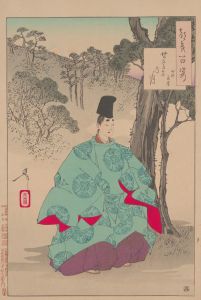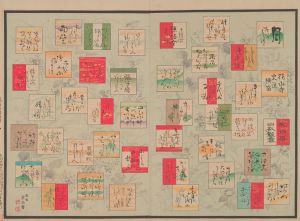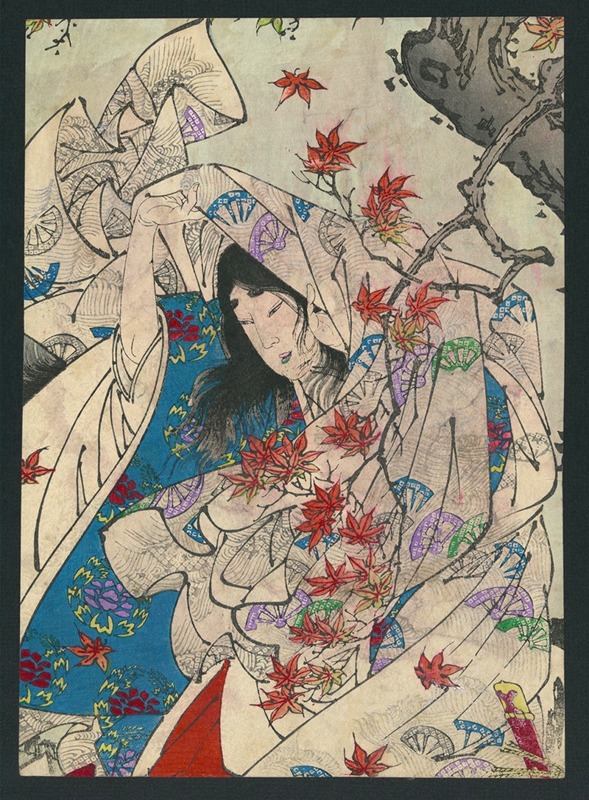
Momijigari
A hand-painted replica of Tsukioka Yoshitoshi’s masterpiece Momijigari, meticulously crafted by professional artists to capture the true essence of the original. Each piece is created with museum-quality canvas and rare mineral pigments, carefully painted by experienced artists with delicate brushstrokes and rich, layered colors to perfectly recreate the texture of the original artwork. Unlike machine-printed reproductions, this hand-painted version brings the painting to life, infused with the artist’s emotions and skill in every stroke. Whether for personal collection or home decoration, it instantly elevates the artistic atmosphere of any space.
"Momijigari" is a woodblock print by the renowned Japanese artist Tsukioka Yoshitoshi, who was active during the late Edo and Meiji periods. Yoshitoshi is celebrated for his innovative approach to traditional ukiyo-e art, and his works often reflect a deep engagement with historical and cultural themes. "Momijigari" is part of Yoshitoshi's broader oeuvre, which includes series like "One Hundred Aspects of the Moon" and "Thirty-Six Ghosts," where he explored themes of folklore, history, and the supernatural.
The term "Momijigari" refers to the Japanese tradition of autumn leaf viewing, a practice that has been celebrated in Japan for centuries. It involves appreciating the beauty of the changing colors of maple leaves, which turn vibrant shades of red and orange during the fall season. This cultural practice is akin to the more widely known "hanami," or cherry blossom viewing, which occurs in the spring.
Yoshitoshi's "Momijigari" captures the essence of this tradition, though it is important to note that the title also alludes to a famous Noh play of the same name. The Noh play "Momijigari" tells the story of a warrior who encounters a beautiful woman in the mountains during the autumn season. Unbeknownst to him, she is actually a demon in disguise. The play explores themes of deception, beauty, and the supernatural, which are common motifs in Japanese folklore and are often depicted in Yoshitoshi's work.
In the print, Yoshitoshi employs his characteristic style, which combines dynamic compositions with intricate detail and vibrant colors. His use of color and line work in "Momijigari" exemplifies his mastery of the woodblock printing technique, which was a dominant art form in Japan during his lifetime. Yoshitoshi's prints are known for their dramatic intensity and emotional depth, qualities that are evident in "Momijigari."
Yoshitoshi's work, including "Momijigari," is often seen as a bridge between traditional Japanese art and the modern era. He was active during a time of significant cultural and social change in Japan, as the country opened up to Western influences during the Meiji Restoration. Despite these changes, Yoshitoshi remained committed to the ukiyo-e tradition, while also incorporating new elements and techniques that reflected the evolving artistic landscape of his time.
"Momijigari" is a testament to Yoshitoshi's ability to blend traditional themes with innovative artistic expression. His work continues to be celebrated for its contribution to the ukiyo-e genre and its influence on subsequent generations of artists. Today, Yoshitoshi is regarded as one of the last great masters of ukiyo-e, and his prints, including "Momijigari," are highly valued by collectors and art enthusiasts around the world.





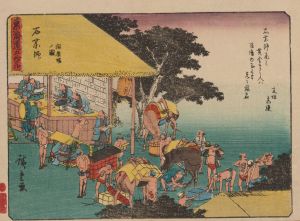
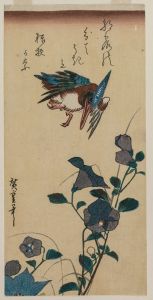
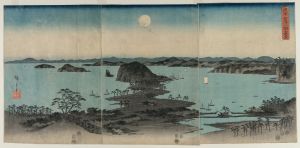
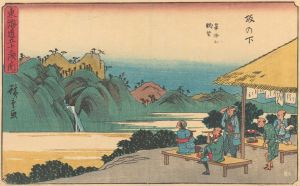
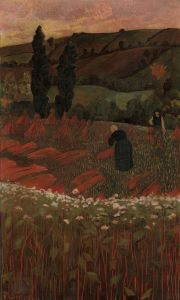
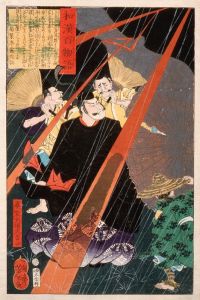
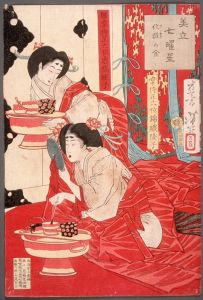
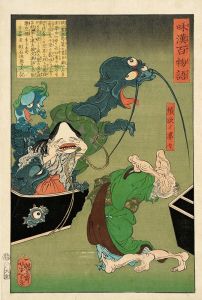
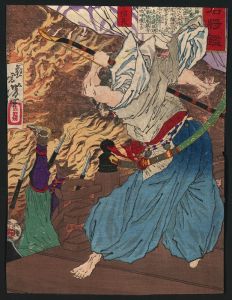
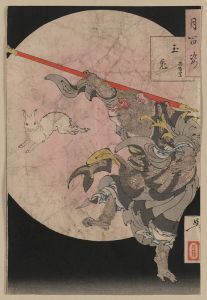
![Musha]taira no tomomori](/imgs/225657/s/tsukioka-yoshitoshi-mushataira-no-tomomori-bb591b96.jpg)
